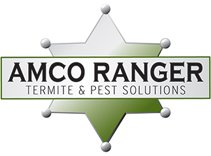Brown Recluse Spider Identification & Prevention
Few things cause as much fear and anxiety in people as the thought of poisonous spiders. Missouri is home to many species of spiders; however, only two are poisonous – the black widow and the brown recluse.
Description
The brown recluse is a shy spider that does not attack people and usually only bites in response to being injured. This is quite the opposite of what most people think. Most reported bites occur when putting on clothing in which the spider is hiding or rolling on a spider in bed. Most people living in proximity to the spider will never see it, nor be bitten by it.
The brown recluse is a medium-sized spider. The legs span an area roughly the size of a quarter to a half-dollar. The color of the brown recluse ranges from a light yellowish brown to a dark reddish or chocolate brown, but most are light to medium brown. The second pair of legs is always longer than the remaining pair in both the male and female. The most distinguishing characteristic is the violin-shaped marking on the top of the body directly above the legs. The violin-shaped marking is usually much darker than the surrounding areas and may appear lined. Since some other species of spider have a violin-shaped marking, the best identification feature for the brown recluse is a semicircular arrangement of three pairs of eyes.
Habitat
Brown recluse spiders prefer sheltered areas with low moisture levels and generally live in walls and attics. They do tend to enter living areas during periods of extreme temperatures – heat in August or cold in January – and may be seen in dark areas such as closets and cabinets.
Since most brown recluse spiders hibernate in the winter (except for those that live indoors), most bites occur between March and October when humans accidentally disturb their habitat.
Here are some useful tips for keeping spiders at bay:
- Store clothing in sealed plastic bags or storage boxes.
- Store shoes in plastic shoeboxes.
- Shake clothing and shoes before wearing.
- Move beds away from walls or curtains.
- Remove bed skirts from box springs.
- Do not use bedspreads that touch or come close to the floor.
- Inspect bedding before climbing into bed.
- Seal all cracks and crevices where spiders may enter the home.
- Move firewood away from the home, elevate it off the ground and cover it with plastic.
We can help
No matter how intimidating or pervasive your pest infestation, you can trust that Amco Ranger knows exactly how to handle it and make sure it doesn’t happen again. Give us a call today if you need helping getting rid of brown recluse spiders.

 House Centipede
House Centipede  Silverfish
Silverfish Fungus gnat adults are less than one-eighth inch long, brown or black with light colored legs and have a mosquito-like appearance. They fly erratically and seem to bounce through the air. You will find fungus gnats flying near potted plants, which offer a nice moisture layer for the larvae to grow into mature adult gnats.
Fungus gnat adults are less than one-eighth inch long, brown or black with light colored legs and have a mosquito-like appearance. They fly erratically and seem to bounce through the air. You will find fungus gnats flying near potted plants, which offer a nice moisture layer for the larvae to grow into mature adult gnats. Fruit flies look similar to house flies but are much smaller. The two most common fruit flies, the red-eyed fruit fly, and the dark-eyed fruit fly, are brownish/black and have striped abdomens. They fly in a smooth path. Any rotting food or area of moist, organic material will be attractive to fruit flies, including garbage cans, compost bins, sink drains, and garbage disposals.
Fruit flies look similar to house flies but are much smaller. The two most common fruit flies, the red-eyed fruit fly, and the dark-eyed fruit fly, are brownish/black and have striped abdomens. They fly in a smooth path. Any rotting food or area of moist, organic material will be attractive to fruit flies, including garbage cans, compost bins, sink drains, and garbage disposals. Drain flies have a hairy body with large wings and breed in the slime that coats drains in your home. Once you recognize that you have drain flies, put some tape over the drains where you suspect they are emerging and leave it overnight. The next day, check to see if any flies have been collected. Once you know their source, you can begin eradication.
Drain flies have a hairy body with large wings and breed in the slime that coats drains in your home. Once you recognize that you have drain flies, put some tape over the drains where you suspect they are emerging and leave it overnight. The next day, check to see if any flies have been collected. Once you know their source, you can begin eradication.